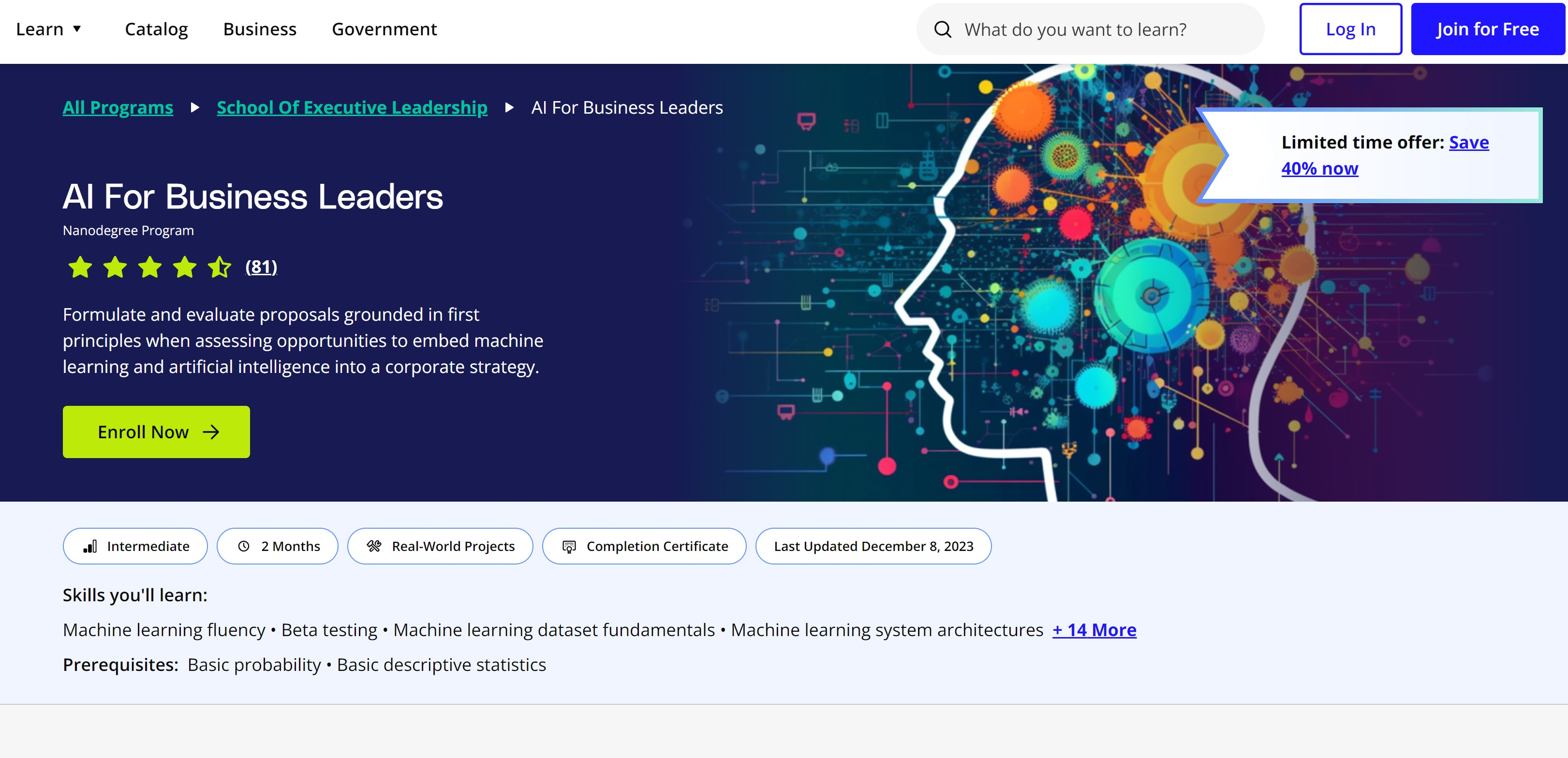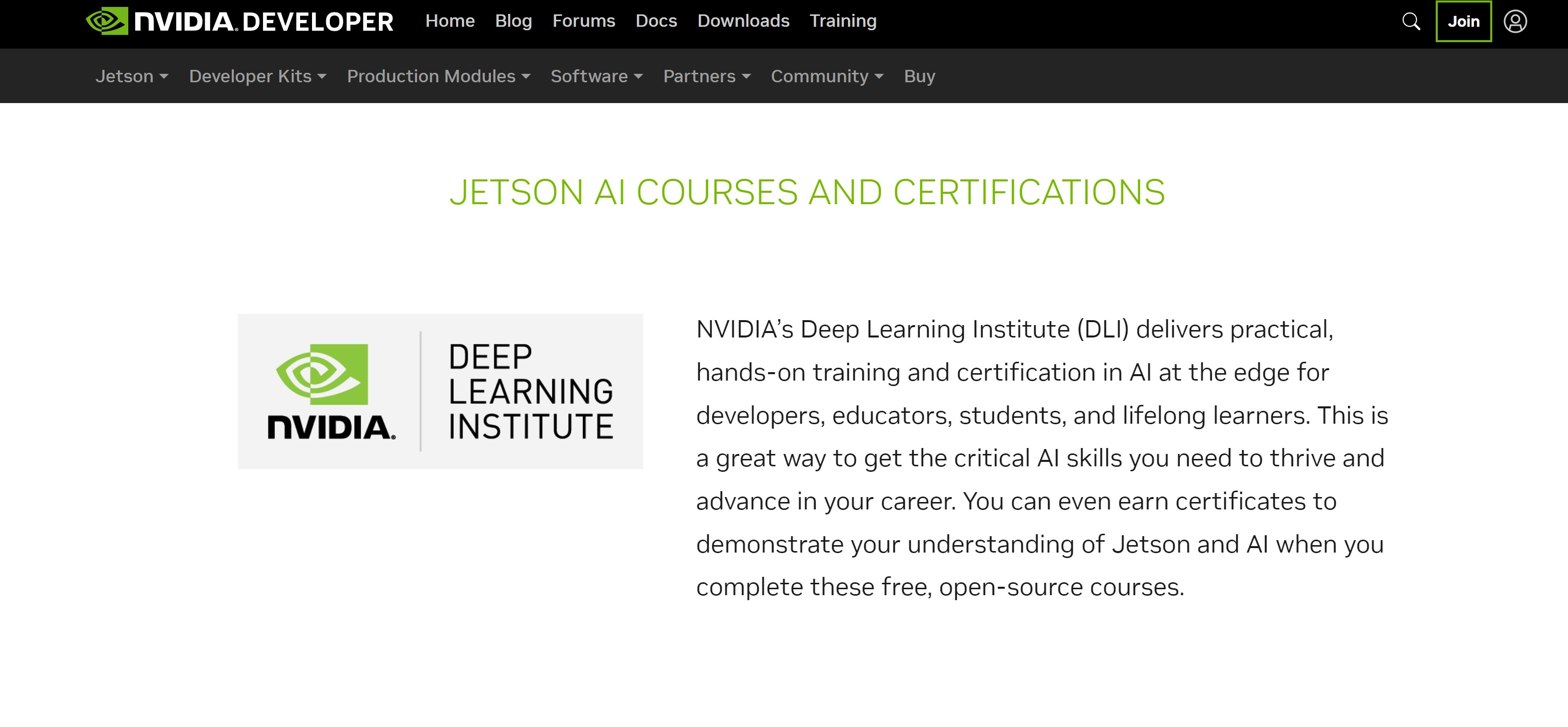AFFILIATE MARKETING
9 Great Artificial Intelligence Certification Courses for a Skills Boost in 2024

While every company in the world is trying to adopt AI in one way or another, you can show potential employers you know what you’re talking about with artificial intelligence certifications. Instead of getting your education from YouTube University, these artificial intelligence certification picks make your resume legitimate and help you stand out in a crowded job market.
The only problem is finding options that are actually worth your time and money. To make things easier, we’ve compiled a list of 9 AI certification options that can boost your skills, enhance your resume, and prepare you for the ever-changing landscape of technology.
Let’s take a look at what these certifications offer and how they help you become qualified for your next tech job.
Artificial Intelligence Certification Programs From Reputable Organizations
All AI certifications help you learn more about emerging technology, but the following courses come from the top universities and organizations in the world. Secure a certificate through these options and your resume has a better chance of impressing hiring managers.
1. Artificial Intelligence Professional Program (Stanford School of Engineering)

The Artificial Intelligence Professional Program from the prestigious Stanford is perfect for those eager to grasp AI’s cutting-edge technologies and principles. You’ll get comprehensive insights into:
- Machine Learning Algorithms
- Deep Learning
- Natural Language Processing
- Supervised/Unsupervised Learning
- Reinforcement Learning
- Graph Neural Networks
- Multi-Task and Meta-Learning
Before enrollment, you need to be proficient in Python and comfortable with college calculus and linear algebra. You’ll also need basic probability theory.
The skills in this course allow you to build your own AI models and algorithms, debug your own code, fine-tune model parameters, and implement generative language models.
It’s a ten-week course with a requirement of 10-15 hours per week. You will, however, get your own instructor and have access to community support.
2. IBM AI Engineering (IBM)


The popular organization IBM is the powerhouse company that created what we now call the supercomputer. This is why their AI Engineering course is one of the best certifications offered.
IBM AI Engineering is an intermediate course for those familiar with Python and data science. This certificate is earned through six individual modules over two months and requires about 10 hours a week.
The course is hosted entirely on Coursera, which means you will need a membership to earn your certificate. But the good news is they offer a 7-day free trial, so you can test to see if the course is what you were expecting.
The content is designed for those ready to master machine learning and deep learning using Python. The program covers:
- Supervised and Unsupervised Learning
- Libraries like SciPy, ScikitLearn, Keras, PyTorch, TensorFlow
- Object Recognition, Computer Vision, NLP
- Recommender Systems, Classifiers
- Scaling Machine Learning on Big Data using Apache Spark
- Building, Training, and Deploying Deep Architectures
After going through all the modules, you’ll finish the course by completing a capstone project on deep learning. For example, you could use machine learning to automate customer segmentation or deep learning for predictive analytics, saving time and enhancing business operations.
Price: 7-day free trial, $49/month for Coursera membership
3. Computer Science for Artificial Intelligence (Harvard)


Releasing its most popular CS50 courses to the general public online, Harvard is offering a computer science for artificial intelligence course that takes place over six months. It actually includes two courses for one price and is taught by a professor at the School of Engineering.
The original course was Intro to Computer Science, and it was the most popular undergraduate course at Harvard.
Harvard’s School of Engineering has combined the classic course with Intro to Artificial Intelligence to create the course you now have a chance to complete.
During the course you’ll learn:
- Graph search algorithms
- Classification
- Optimization
- Reinforcement learning
After completing the course, students will learn how to design complete intelligent systems, use AI in Python programs, and have a robust understanding of computer science principles. These deep learning models and AI technologies are presented in easy relatable terms, making it manageable in the world of complicated AI courses.
All the courses on this list will help you land better opportunities, but getting a course completion from Harvard will undoubtedly matter more than others.
Artificial Intelligence Certifications For Entrepreneurs
Getting certified on the ins and outs of computer science or deep learning algorithms isn’t relevant if you aren’t a programmer or engineer. The following courses are designed for practical use and help businesses get more from the tools they use.
4. Jasper.AI Certification Program


Jasper.ai exploded onto the business scene by being one of the first fully integrated AI tools for content writing.
As seen in our Jasper.ai review, you can easily automate copy for social media, web pages, blogs, product descriptions, and more.
Now, they’re offering a complete Jasper.ai certification program to support your learning path. It helps business professionals and freelancers to save time on content. It also lets others know that you’re proficient in the tool if they want to hire out AI development.
The Jasper.ai proficiency certification is a short course designed for anyone who wants to show their expertise. You’ll learn:
- Brand Voice
- Campaigns
- Chat, Documents, Templates, and Art
- Basic troubleshooting for content generation
- Understanding of how Jasper is trained
Within just an hour and a half, divided into two modules, you’ll be equipped to incorporate the latest Jasper updates into your workflow.
Imagine using the “Brand Voice” feature to maintain consistent communication or employing “Templates” to accelerate document creation.
After passing the 60-question final exam, you’ll be able to troubleshoot when content generation falls short of expectations.
5. SurferSEO Certificate of Achievement
SurferSEO is a tool used to optimize copy for web pages. The SurferSEO Certificate of Achievement course is great for those who want to learn how to use AI. Not only to write better but to create keyword-rich content that ranks higher on Google and other search engines.
The tool is one of the more comprehensive copy-optimizing options. It automatically pulls data from the top-ranking sites on Google. It then averages out keyword usage numbers you can use as guideposts when writing copy for your blog or web pages.
The data helps you rank higher on Google using SEO best practices. It’s one of the best AI SEO software options that incorporates AI into the platform.
You’ll see information like the number of headings, titles, images, and keywords that need to be used. There are even outline recommendations and a complete content editor.
In the course, you’ll learn:
- The basics of SEO
- How SurferSEO’s algorithm works
- Keyword research and optimization techniques
Passing the short exam will give you a downloadable certificate as well as a LinkedIn Badge to add to your profile.
The course even has an online directory of students who have successfully passed the exam. All of the 50,000+ users of Surfer have access to the directory and can reach out to graduates for paid help.
6. AI for Business Leaders


Designed for industry leaders with a focus on practical AI usage, the AI for Business Leaders course helps you make better decisions on how to use AI.
Over two months, you’ll follow a fictitious retailer making decisions on optimal AI use cases for specific business situations. This brings a real-life element to artificial intelligence certification that will prepare you for actual AI scenarios you may encounter.
You’ll learn skills like:
- Machine learning fluency
- Beta testing
- Machine learning dataset fundamentals
- Machine learning system architectures
- Machine learning use cases
- Product storyboarding
- Product proposals
- Model performance metrics
You’ll go along the journey and learn which business use cases would be best for AI and which would be a waste of time and money.
In the final project, you’ll apply these exercises to a business of your choice, solidifying your learning.
This program provides a comprehensive yet accessible AI education, positioning you to harness AI content writing tools in your business.
Price: Month-to-month: $249, Four months: $846
Free Artificial Intelligence Certification Programs to Consider
You don’t need thousands of dollars or an education from Ivy League schools to get AI certified. The courses below offer comprehensive introductions to AI and get your foot in the door to start your future career today.
7. Intel Edge AI Certification


Specific to the Intel Edge AI hardware and software, the Intel Edge AI Certification covers the fundamental topics necessary to build a deep learning project.
You’ll get hands-on experience with Edge AI tools and platforms like the Intel® Distribution of OpenVINO™ toolkit and Intel® Developer Cloud for the Edge.
Imagine detecting safety gear or preventing retail losses using computer vision deep-learning inference. You’ll learn to deploy pre-trained models for computer vision and develop deep-learning inference applications
Upon completion, you’ll have a portfolio of edge AI solutions, showcasing your proficiency in TensorFlow, PyTorch, Open Neural Network Exchange (ONNX), and other public models.
8. Jetson AI Certification


NVIDIA is a pioneering tech powerhouse known primarily for its graphics processing units (GPUs) for gaming and professional markets. The company has since transitioned into AI computing, becoming the parent company of Jetson.
By leveraging its deep learning capabilities to develop advanced platforms for autonomous machines, the company created the Jetson AI Certification program.
This artificial intelligence certification is a great way to get familiar with Jetson and understand how it works within your business needs.
The program is designed for several different AI technologies, including:
- Developers
- Educators
- Students
- Lifelong learners
You’ll be required to create a project that incorporates AI elements (machine learning or deep learning) with GPU acceleration using NVIDIA Jetson. To enhance your understanding, you’ll make a video demonstration showing how your project works and how it was developed.
There are two paths to earn the Jetson AI certification: a Jetson AI specialist or a Jetson AI Ambassador. The ambassador program opens access to many other products and is ideal for educators and instructors.
9. AI for Everyone


One of the best introductory AI courses available is AI for Everyone. From designers and writers to engineers and business leaders, anyone can learn the basics of AI and how it can be incorporated into their work from this artificial intelligence course.
AI for Everyone goes deep into the terminology behind AI so you can be familiar with common lingo like machine learning, deep learning, algorithms, and more. It gives you a foundation to work from and build more AI skills as you progress in your career.
You’ll learn the limitations of AI and what it can and can’t do, along with how to recognize when AI can be used to solve a business problem. This is a skill that will become increasingly important as businesses adopt AI and machine learning into everyday operations.
The certification program offers guidance on working with an AI team and navigating ethical discussions around AI. You can learn what the challenges of implementing AI are and how successful teams are in creating unbiased and fair algorithms.
Comprising four modules, this seven-hour course is a time-efficient way to boost your AI knowledge and implementation. While technical students may already know most of this knowledge, if you’re new to AI you will gain a solid foundation to progress from.
Final Thoughts: 9 Artificial Intelligence Options to Boost Your Skills
The world of Artificial Intelligence is opening doors and creating new opportunities in every industry.
These nine accessible and affordable AI certificate programs enable you to expand your skill set and stay competitive in an evolving market.
Whether enhancing your webpage with SEO techniques or refining your business decisions through AI, these skills can propel your professional journey to new heights.
Apply, experiment, and continue to explore the dynamic landscape of AI.
Take a look at our article on the best certifications to work from home for more suggestions.


















